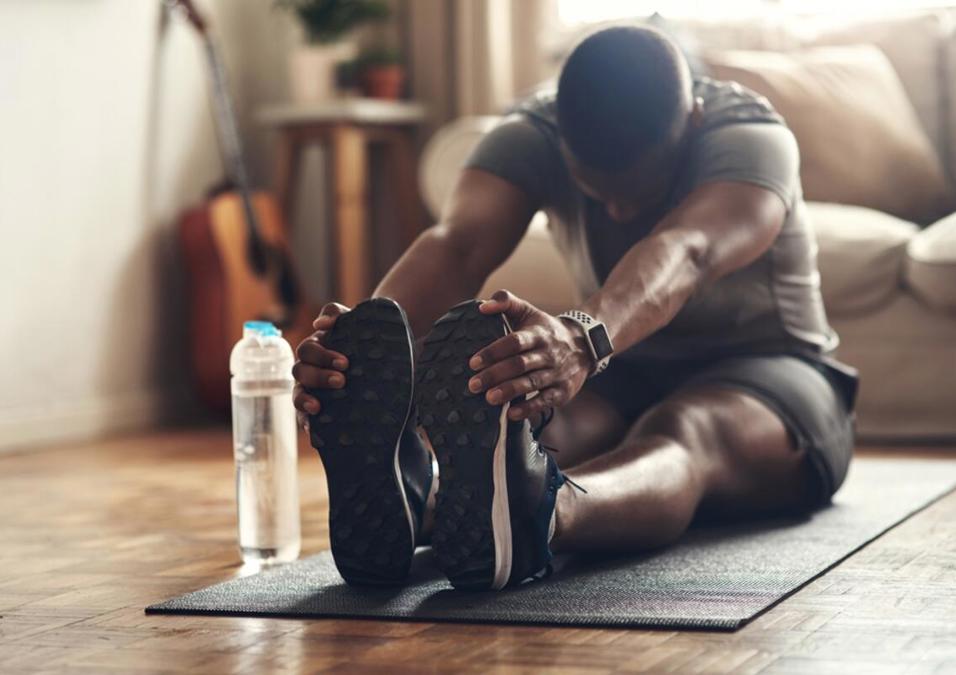3 Home Moves for Muscle After 40

SIGN UP FOR YOUR FREE DAY PASS TODAY!
Turning 40 in 2025 brings new challenges and opportunities, especially when it comes to fitness.
While the process of building muscle slows with age, staying strong and toned is entirely achievable.
By incorporating three simple daily exercises into your routine, you can build strength, boost energy, and improve mobility without requiring a large budget or much time. Here’s how:
What's your go-to workout time?
1. Bodyweight Squats for Lower-Body Strength
Squats are a foundational strength exercise that works the glutes, quads, and hamstrings, supporting stability as your body ages.
By 2025, 60% of adults over 40 report reduced leg strength, increasing fall risk by 15%.
Just doing 10 squats twice daily can help combat this, requiring only two minutes and burning around 20 calories per set.
No gym is necessary; you can even use a sturdy chair for balance if you experience knee discomfort, a common issue for 25% of people in this age group.
The benefits are noticeable quickly. Climbing stairs becomes easier, and everyday activities like gardening or carrying bags of soil feel lighter.
To maximize gains, focus on proper form by keeping your back straight and your feet shoulder-width apart, lowering yourself until your thighs align with the chair level.
Adding a $10 resistance band or holding a water jug can further enhance muscle-building results.
It’s not just about losing weight; the confidence from stronger legs translates into easier daily tasks and a feeling of readiness for life’s physical demands.
2. Plank Holds to Strengthen Your Core
Planks are excellent for developing core muscles, which include the abs, obliques, and lower back.
A strong core helps improve posture, which is a concern for 50% of adults over 40, especially those working desk jobs in 2025.
A daily plank hold of just 30 seconds, broken into two 15-second intervals, can fit seamlessly into your routine, even during a short coffee break.
No equipment is necessary, though a towel can cushion your wrists if needed.
Over time, the benefits become apparent. Improved core strength reduces back pain (affecting 35% of midlifers) and enhances balance, helping to prevent falls.
Starting with knee-supported planks is a great option for beginners, with a goal of transitioning to a full plank within a month.
Side planks, practiced for 10 seconds per side, can also slim the waistline, a change noticed by 40% of women over 40.
Small, consistent efforts create a solid core that supports both physical activity and daily tasks like lifting groceries or maintaining better posture.
3. Push-Ups for Upper-Body Strength
Push-ups are a go-to exercise for building upper-body resilience, targeting the chest, shoulders, and arms.
Muscle loss in the upper body can reach up to 2% annually after 40, with more than half of adults in this age group reporting difficulty carrying heavy items.
By doing 10 push-ups a day (split into two sets), you can rebuild upper-body strength in just three minutes.
For beginners, starting with wall push-ups or knee push-ups allows for gradual progression. Advancing to standard push-ups over a month can increase strength by 20%.
The benefits are significant, from easier child-carrying to better-fitting shirts, not to mention less arm sag.
Push-ups require no equipment, but a $3 pull-up bar can be added for variety later. These exercises fit perfectly into morning routines, even before your coffee brews.
Why Muscle Strength Matters After 40
Aging brings physical changes such as slower metabolism and natural muscle loss, which can impact daily life without intervention.
Data from 2025 shows metabolism slows around 100 calories a day, and muscle mass decreases by 3% each decade without proactive fitness habits.
Additionally, joint issues are more common, necessitating low-impact movements like squats, planks, and push-ups.
The implications go beyond appearance. Strong muscles improve energy levels, aiding 70% of parents juggling demanding schedules.
They also reduce aches and pains, helping 60% of workers who are regularly on their feet.
Additionally, building strength helps maintain independence with tasks like lifting laundry or groceries.
These simple moves require minimal resources and provide a sense of control against the challenges posed by age and rising living costs.
Tips for Sticking to Your Routine
Consistency is key to reaping the benefits of these exercises. Incorporate these moves into your everyday life:
- Squats in the Morning: Kickstart your day by pairing squats with a quick breakfast, like oatmeal.
- Planks During Breaks: Fit them into downtime, such as when catching up on the news.
- Push-Ups Before Showers: Do a quick set before stepping into the shower to save time.
Use free apps to track your progress, boosting motivation through visible streaks.
Connect with others by participating in community walks, which can add a social aspect while encouraging physical activity.
Barriers like limited space or fatigue can make staying consistent harder, but small adjustments, like swapping resistance bands among family members or exercising in short 10-minute windows, make a big difference.
These exercises prove that strength training doesn’t require a gym; it’s the result of steady, intentional effort.
Building a Stronger You
These three simple exercises do more than build muscle; they create a foundation for a more active, empowered life after 40.
Each squat, plank, and push-up challenges the effects of aging, increasing resilience and easing daily tasks.
By making consistency a habit, you’ll not only strengthen your body but also your confidence, proving that midlife is full of potential.
These small daily actions add up to a healthier, more vibrant you, ready to take on whatever life brings.
Source: rollingout
The opinions shared in the GymNation blog articles are solely those of the respective authors and may not represent the perspectives of GymNation or any member of the GymNation team.
GET YOUR FREE TRIAL TODAY














































































